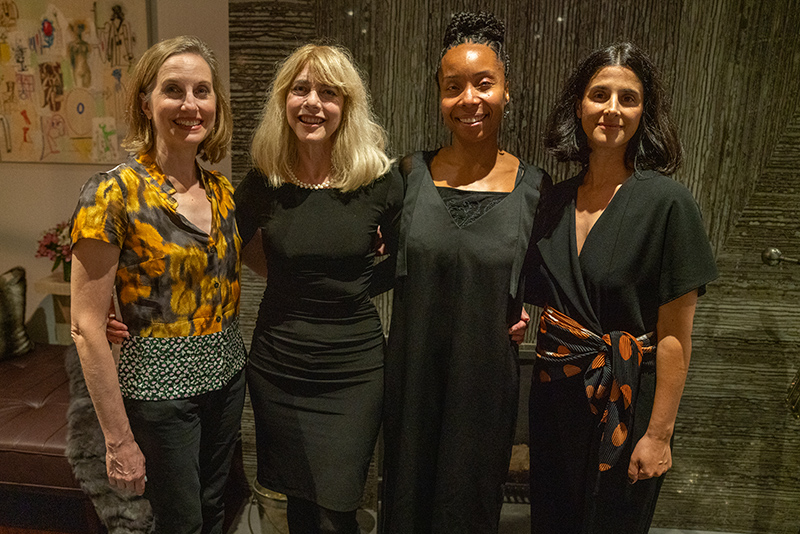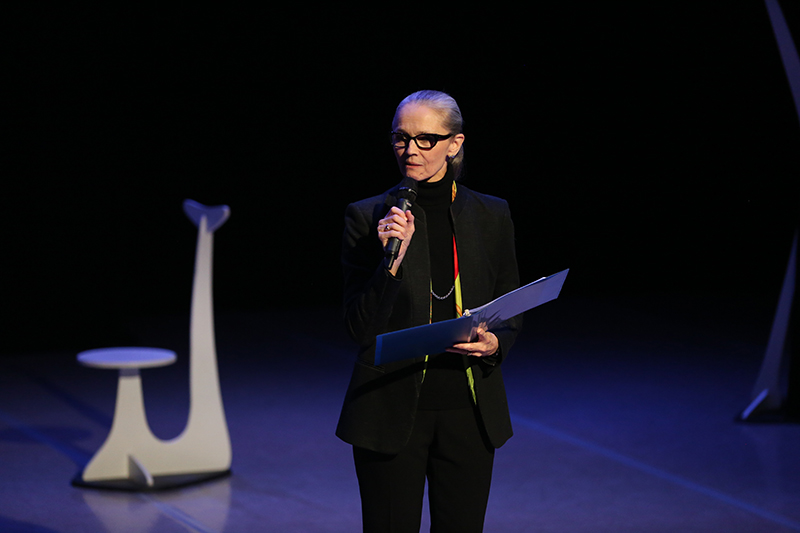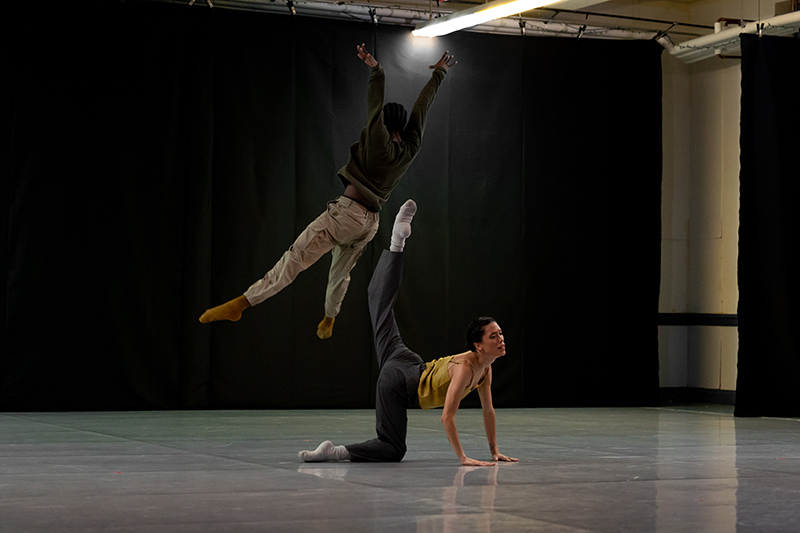Women at the Top: Leaders in Dance
In conversation with Wendy Whelan, Associate Artistic Director at New York City Ballet; Janet Eilber, Artistic Director at Martha Graham Dance Company; and Lia Cirio, Principal Dancer/Choreographer at Boston Ballet
BY KATHRYN ROSZAK
Note: This essay was first published in Stance on Dance’s fall/winter 2022 print issue. To learn more, visit stanceondance.com/print-publication.
In Swan Lake, a woman is trapped in a swan’s body by a male sorcerer, and she can only be freed by uniting with a prince in death. In The Sleeping Beauty, a young princess grows up and must choose a suitor, only to be pricked by a spindle and sent to sleep for 100 years, from which she can only be awoken by the kiss of a prince. These are the fairy tales of ballet: women who are trained to perfection must sacrifice themselves. Now the myths and fairytales are being rewritten as more women take leadership roles in dance.
We take a look at three women leaders today. Wendy Whelan, the highly individual dancer from New York City Ballet who danced for Balanchine and is now Associate Artistic Director of NYCB, has changed the culture by bringing in women and artists of color. Janet Eilber, who was chosen by Martha Graham to dance in Graham’s company, is now ensuring the company is not a museum but a place to make new dances. Lia Cirio, a ballerina with Boston Ballet and who is equally at home in classical and contemporary repertoire, is now a promising choreographer. They discuss their experiences navigating the upper echelons of the dance world where it is more common for men to be leaders than women. They also share how COVID has affected the field, and what their outlooks are moving forward as women at the top of dance.
Wendy Whelan
Wendy Whelan was featured in the film Restless Creature. She danced for NYCB under Peter Martins, a renowned dancer who was bequeathed the directorship of the company by George Balanchine, and whose own directorship became mired in scandalous #MeToo eruptions.
Whelan feels that the culture of the company is very much changed from when she danced there: “As a dancer in my generation, I felt pigeonholed. The message was, ‘You are one thing.’ I didn’t believe I could dance and teach at the same time. I didn’t feel the capacity or that I had the experience to do that, the mental side of structuring a class, or leadership, not in the way I’d practiced my ballet technique. I’d have dreams where I would be on the top of the hill looking down at a rehearsal, looking down at the part and somebody filled in for me. ‘But that’s my part,’ I’d cry out. So there is that feeling of so many women vying for a leading ballerina position. It haunted me.
I felt once I got something I should hang on to it and cultivate it or I’d lose it. It was a message I received from the culture. It’s changing quite a bit. We have so many college graduates now. Some principal ballerinas are getting their MBAs and are mothers. You can do it all!
I’m the Associate Artistic Director. It’s a different position from being the leader. I work as part of a team with Jonathan Stafford and Justin Peck. We really go into our leadership as a trio. So, I’m creating the position. I’ve seen women leaders and artistic directors but not necessarily women in my position who are part of a team. When I was going for this job, I was told, ‘Don’t be a diva.’ I’m not a diva. It was hard for me to figure out that balance: my voice, my tone, my wording. I wanted to just be myself.
In the team we are finding a balance of trust of our individual voices. We are looking at the pieces of the pie, all aspects of society, to find those voices, find that union forward.
Out of seven recent commissions, three works were by women, and one is our first ever choreographer of color. I have chills; the thought of letting different artists from the spectrum of our art form have a voice. That’s an aspect I take very seriously. We have our first full-time faculty member of color at School of American Ballet. That’s powerful for our institution. We pride ourselves at NYCB for innovation, progress, and having the future in mind. I also want to support the females leaving the company. There is an imbalance of men being considered for leadership roles. I feel it, see it. I step in whenever I can to help women see more aspects of themselves. I think for women, it’s a little bit tougher in that way.”

Wendy Whelan, Kathryn Roszak, Sidra Bell, and Andrea Miller at Danse Lumiere’s Women Directors, Choreographers, and Composers award ceremony, NYC, 2021, Photo by Steven Pisano
Janet Eilber
Janet Eilber is a highly intelligent former Graham dancer: “During my tenure as artistic director we have experimented with a great range of programming designed to give our audience more points of access to the masterworks of modern dance. These include offering a spoken introduction at all our performances to contextualize programming, the use of media and narration onstage, unexpected partnerships, rich and varied education opportunities, online competitions, and – most importantly – the commissioning of new works by today’s top artists that resonate with the Graham classics and reveal their timeless interaction with current conversations.
The shift in the dance world to hire more women leaders is a long time coming and has been accelerated in the past few years by the #MeToo movement and other shifts in cultural awareness. The recent Supreme Court decision stripping women of equal rights and the many other issues dividing this country have created new awareness and activism around equity. Organizations are asking what they can do to provide more opportunities to those who have been left out of the conversation for too long – not only women. And in the arts, funders are demanding this kind of due diligence from nonprofit organizations. It’s inspiring to see that this heightened awareness is showing tangible results.
We have been women led since inception, of course, and the great majority of our staff and faculty are women. But we continue to focus on how we can mentor or support women – on what opportunities we can offer them. And more and more when we commission new work, we turn to women artists – not only for choreography, but also music, costume, and lighting design. Men in the Graham organization are quite outnumbered!
Working with and supporting women and other underserved communities, frankly, is always at the center of our planning. Martha Graham believed in the empowerment of the individual – regardless of gender, race, or creed. That belief remains at the heart of our work throughout the organization.
Our 100th anniversary is coming up and we are reaching out to artistic directors around the world asking them to take inspiration from Martha Graham – to perform a Graham work or use her legacy in some creative way.
Of course, Martha Graham mentored me in an approach to dance, to creativity, and to living life, but I have to say that she built on a solid foundation given to me by my mother, Carol Brown Eilber, who was part of the feminist wave of the 1960s. She gave me a subscription to Ms. Magazine for my 21st birthday and taught me that I deserved equal opportunities in everything I did.
The arts in general are grappling with recovering from the pandemic. It’s not just about returning to the ‘normal’ we all knew. It’s asking, ‘What is the new normal?’ I think we have to take a page from Martha Graham and other great artists who welcomed and embraced change. Martha was always anticipating change and thinking about how she could use it to create something even more astonishing. That’s our challenge now: How to welcome the change we are faced with and make something new, exciting, and meaningful.”

Janet Eilber, Photo by Melissa Sherwood
Lia Cirio
Lia Cirio is the striking dancer/choreographer at Boston Ballet: “Some of my challenges include a lack of confidence or self-esteem, shying away from certain steps. I felt a lot of pressure when I was a young professional. In my second year as a principal, everything began to scare me, and I lost much of my confidence because of casting reasons or failures (in my own eyes). The feeling is that if you don’t do well, you could get fired or injured. Now I let the live art take me. It’s tough for women because we are so many. You always need to have bigger extensions, faster turns. Now I feel more the idea of being unique. Working with choreographer Bill Forsythe helped as he encouraged me to embrace my uniqueness and not be afraid to look or dance in a different way. It’s not about perfect technique but who you are as a person.
COVID changed our culture. People now ask how you’re doing, whereas there wasn’t so much of that before. We also have an emphasis on social justice, including Black Lives Matter, Stop Asian Hate, and #MeToo. These issues were not really spoken about before. We are all required to have sexual harassment training and diversity, equity, and inclusion training. Before, the culture in the ballet world stayed the same. Now we are cultivating a healthy change. Artistic directors are looking at a broader picture which includes more dancers of color and nonbinary dancers.
It was pure happiness to be back in the studio after COVID. This past summer, I worked with the company I founded with my brother, Jeffrey Cirio, called Cirio Collective, a company of about 10 dancers. We have been lucky to have eight seasons of our company with residencies and shows in places such as Vineyard Arts Project, Cape Dance Festival, the Joyce Theater, and Despertares in Guadalajara, Mexico. We continue to work towards growing and want to share our art with the world. We hope to get more festivals and bigger theater spaces to perform in.
It was a big year of choreography for me, including world premieres with Festival Ballet of Providence, Boston Ballet, and Cirio Collective. My brother is a huge inspiration, mentor, and friend. Bill Forsythe is another mentor and choreographer I look up to, and Margaret Tracey is a wonderful coach, mentor, and friend.
When I first started dancing under male leaders, the idea about women was to shut them up and not listen. Now everyone’s eyes are open; there’s listening and there’s respect.
The next generation will have more confidence, dance the way they want to dance, speak their minds, not be afraid, and we’ll see women’s stories on stage.”

Tyson Clark and Lia Cirio in Jeffrey Cirio’s “There is Beauty in the Dark”, Photo by Ryan Smith
~~
Wendy Whelan’s quotes are from a recorded interview with Danse Lumiere. It is available to watch at www.dlkdance.com/women-ballet-choreographers-residen.
Kathryn Roszak is a choreographer, filmmaker, educator, and activist. She danced with San Francisco Opera Ballet and acted with Berkeley Repertory Theatre. Her choreography has been presented by La Mama ETC, 92nd Street Y in New York City, and on the West Coast and abroad. She is artistic director of Danse Lumiere, which has been recognized for collaborations with dance and literature. She taught at UC Berkeley and founded the Women Directors, Choreographers, and Composers Residency. Kathryn is currently working on a film that explores the themes of this article. www.dlkdance.com
Watch Kathryn’s interview with Janet Eilber at Graham Gathering’s Living the Change: Revolution/Evolution of Women Leaders in Dance.
Note: This essay was first published in Stance on Dance’s fall/winter 2022 print issue. To learn more, visit stanceondance.com/print-publication.
